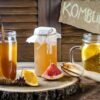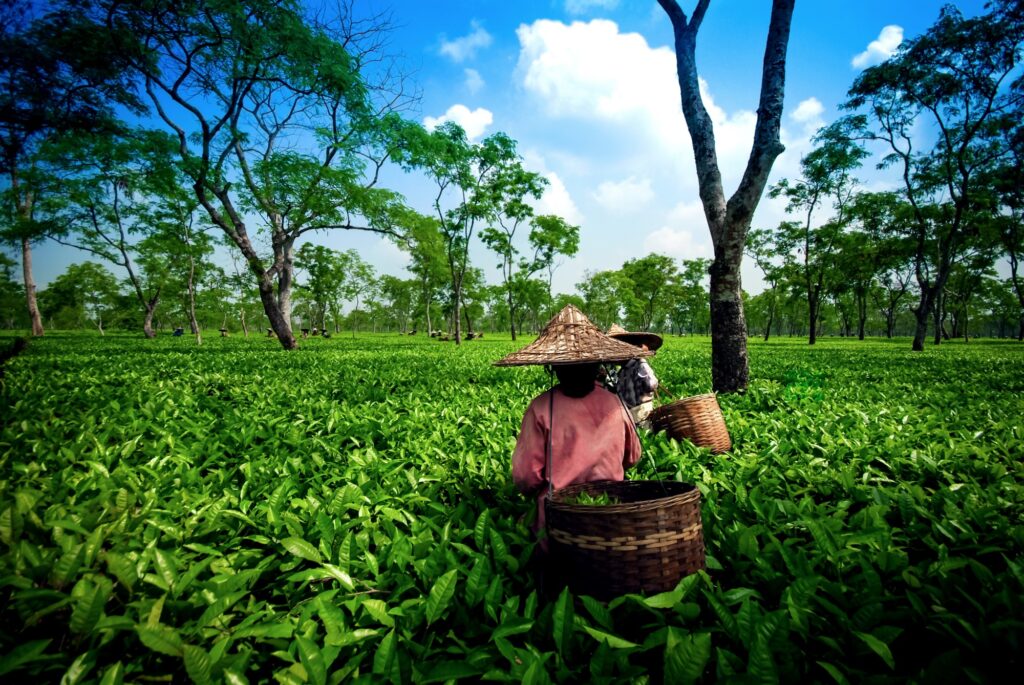
Get ready to embark on a sensory journey through the world of black tea. Here, we will delve into the rich and aromatic regions where this beloved beverage originates, unraveling the secrets behind its origins and flavors. From the mist-covered hills of Darjeeling to the sprawling tea gardens of China, each region has a unique story to tell, resulting in a diverse range of flavor profiles that captivate tea enthusiasts worldwide.
Discover the delicate notes of jasmine-infused black tea from the Fujian province of China, or indulge in the malty and robust Assam tea from India’s fertile plains. Immerse yourself in the rich history and traditions that have shaped these tea-growing regions for centuries, as you understand the meticulous cultivation and processing techniques that contribute to the exquisite character of black tea.
Whether you’re a seasoned tea connoisseur or just beginning to explore the world of black tea, we will provide you with a deeper appreciation for the origins and flavors that make this beverage a beloved staple amongst tea lovers. So grab your favorite teapot and get ready to savor the wonders of black tea.
Origins of Black Tea
Black tea, known for its bold and robust flavors, has a fascinating history that dates back centuries. Its origins can be traced back to ancient China, where it was first discovered and cultivated. Legend has it that black tea was accidentally created when a tea leaf fell into a pot of hot water, resulting in a dark and flavorful brew. Since then, black tea has become a staple in many cultures around the world, with each region adding its own unique twist to the production and flavors of this beloved beverage.
Famous Black Tea Regions
Darjeeling: The Champagne of Teas
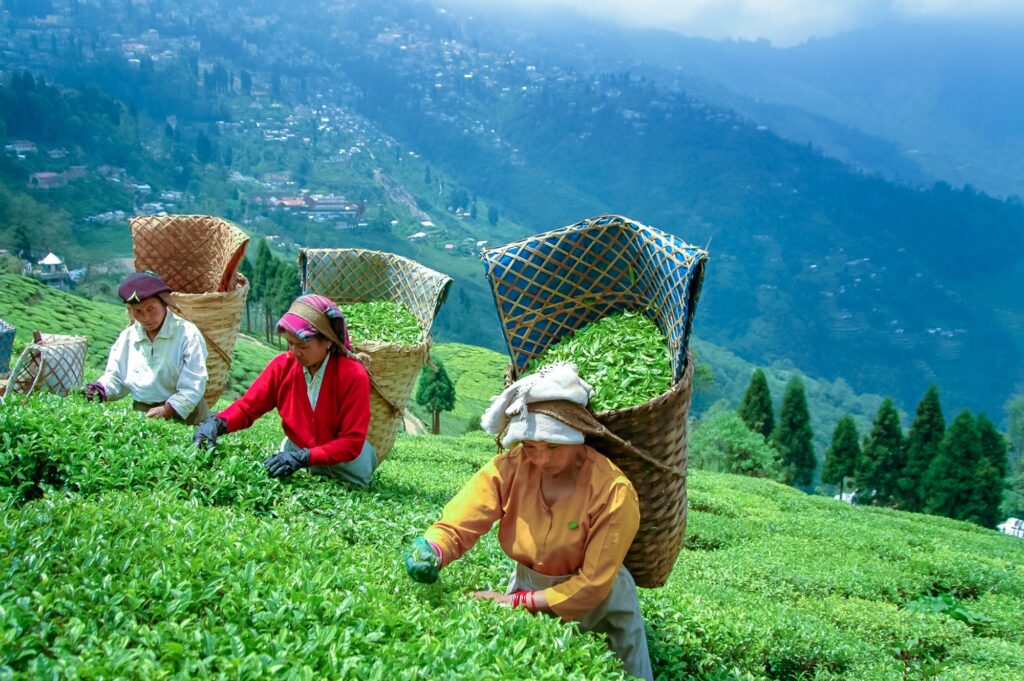
Nestled in the foothills of the Himalayas, the Darjeeling region in India is renowned for producing the “Champagne of Teas.” With its cool climate and high altitude, Darjeeling creates the perfect conditions for cultivating some of the most exquisite black teas in the world. The tea gardens here are shrouded in mist, providing a unique flavor profile that is often described as muscatel.
Darjeeling black tea is known for its delicate and floral notes, reminiscent of ripe fruits and a hint of musk. The first flush, harvested in spring, is highly sought after by tea connoisseurs for its light and brisk taste. Second flush teas, harvested in summer, offer a more robust and full-bodied flavor. The autumn flush brings a mellow and earthy character to the tea.
To ensure the highest quality, Darjeeling tea is plucked by hand. The leaves undergo a meticulous process of withering, rolling, oxidation, and drying to bring out the distinct flavor and aroma. The result is a tea that is cherished by tea enthusiasts around the globe.
Assam: The Bold and Robust Black Tea
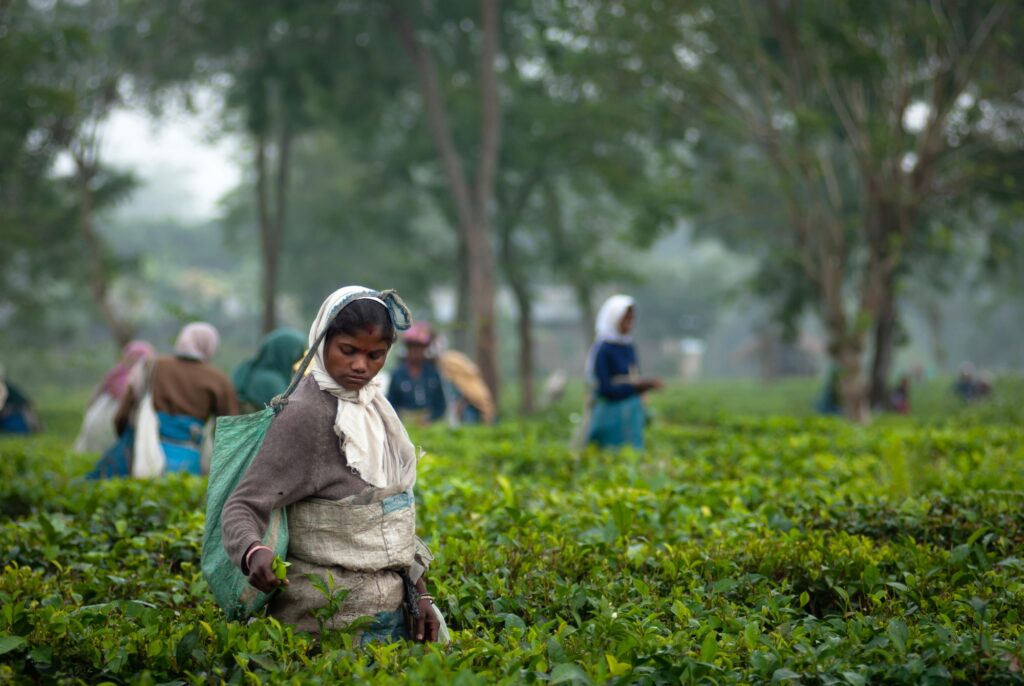
Known as the birthplace of Indian tea, the fertile plains of Assam produce some of the boldest and most robust black teas in the world. Located in northeastern India, the region is blessed with a hot and humid climate, ideal for growing the Camellia sinensis var. assamica tea plant.
Assam black tea is renowned for its strong and malty flavor, often enjoyed with a splash of milk. The rich amber liquor and full-bodied taste make it a popular choice for breakfast teas. The tea leaves here are larger and broader compared to other regions, contributing to the bold and robust character of Assam tea.
The harvesting season in Assam begins in late March and continues until November, with the second flush being the most prized. During this period, the tea leaves develop a distinct caramel-like sweetness, complementing the malty notes. The leaves are carefully processed through withering, rolling, fermentation, and drying to preserve the unique flavor profile.
Cultivating tea in Assam is a labor-intensive process, with the tea gardens dotted across vast estates. The lush greenery and scenic beauty of the region add to the allure of Assam tea, making it a must-try for black tea enthusiasts.
Ceylon: The Bright and Citrusy Black Tea
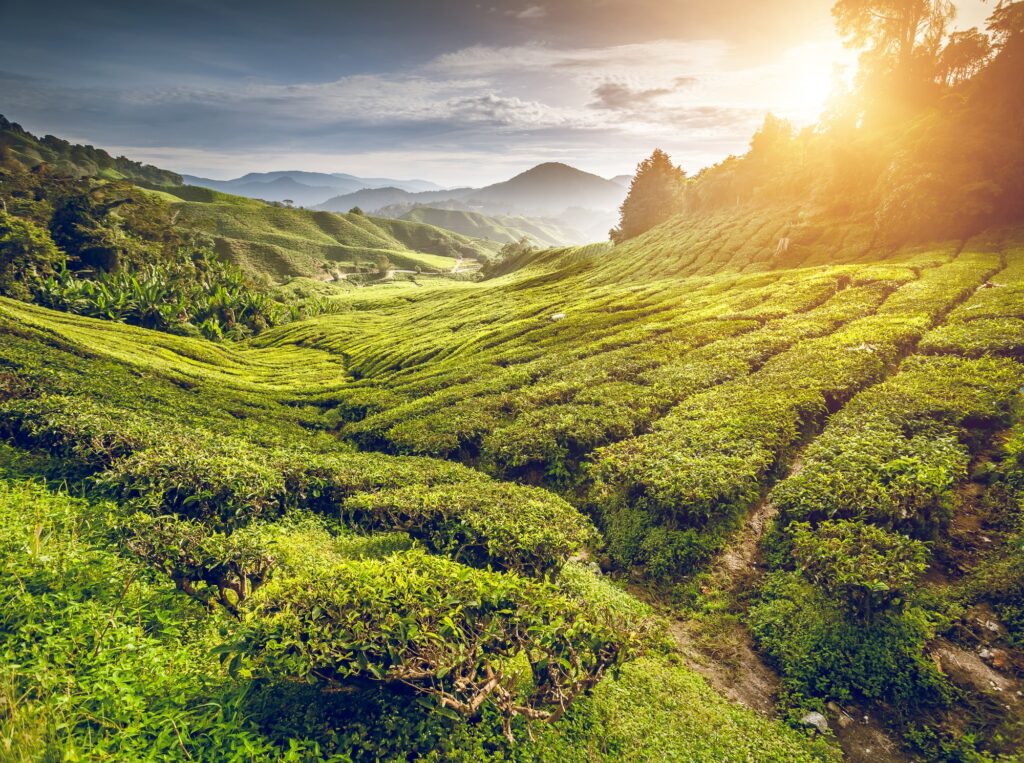
Sri Lanka, formerly known as Ceylon, has a long and storied history of tea production. Nestled amidst lush mountains and picturesque landscapes, the tea gardens of Ceylon produce black teas that are bright, citrusy, and refreshing.
Ceylon black tea is known for its brisk and lively character, often featuring notes of citrus fruits like orange and lemon. The high elevations and cool temperatures in the region contribute to the development of these vibrant flavors. The tea leaves are carefully plucked by hand and undergo a rigorous process of withering, rolling, oxidation, and drying to capture the essence of Ceylon tea.
The tea estates in Ceylon are spread across different regions, each offering its unique flavor profile. Nuwara Eliya, situated at the highest elevation, produces teas with delicate and floral notes. Uva, known for its strong and full-bodied teas, is located in the eastern part of the country. Dimbula, in the central highlands, creates teas with a bright and lively character.
Ceylon black tea is not only enjoyed on its own but also serves as a base for many flavored teas. Its versatility and refreshing taste make it a popular choice among tea lovers worldwide.
Keemun: The Fragrant and Floral Black Tea
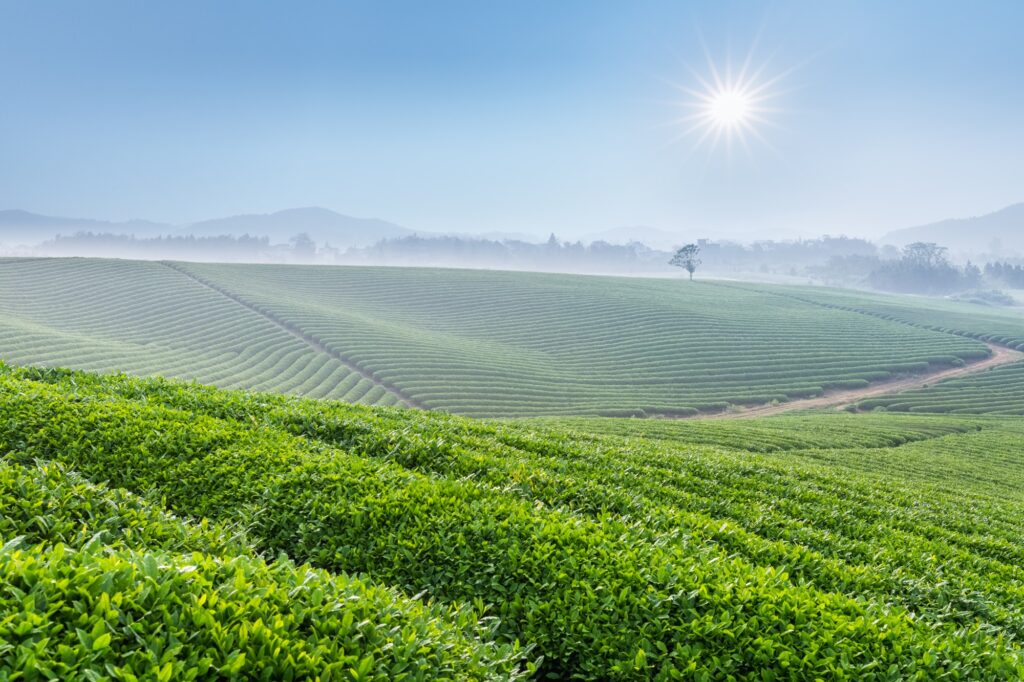
Hailing from the Anhui province of China, Keemun black tea is known for its fragrant and floral notes. Considered one of the finest black teas in the world, Keemun has a distinct aroma reminiscent of orchids and a smooth, mellow taste.
The tea leaves used to produce Keemun black tea are small and tightly twisted, resulting in a deep reddish-brown liquor. The flavor is often described as fruity with hints of wine and chocolate. Keemun black tea is enjoyed on its own or as an ingredient in various tea blends, adding a delicate and complex character.
The region’s unique terroir, with its fertile soil and moderate climate, plays a crucial role in shaping the flavor of Keemun black tea. The tea leaves are meticulously processed through withering, rolling, fermentation, and drying, allowing the flavors to develop and intensify.
Keemun black tea has gained recognition worldwide and is often regarded as one of the best examples of Chinese black tea. Its delicate flavors and floral aroma make it a favorite among tea enthusiasts seeking a refined and elegant tea experience.
Lapsang Souchong: The Smoky and Bold Black Tea
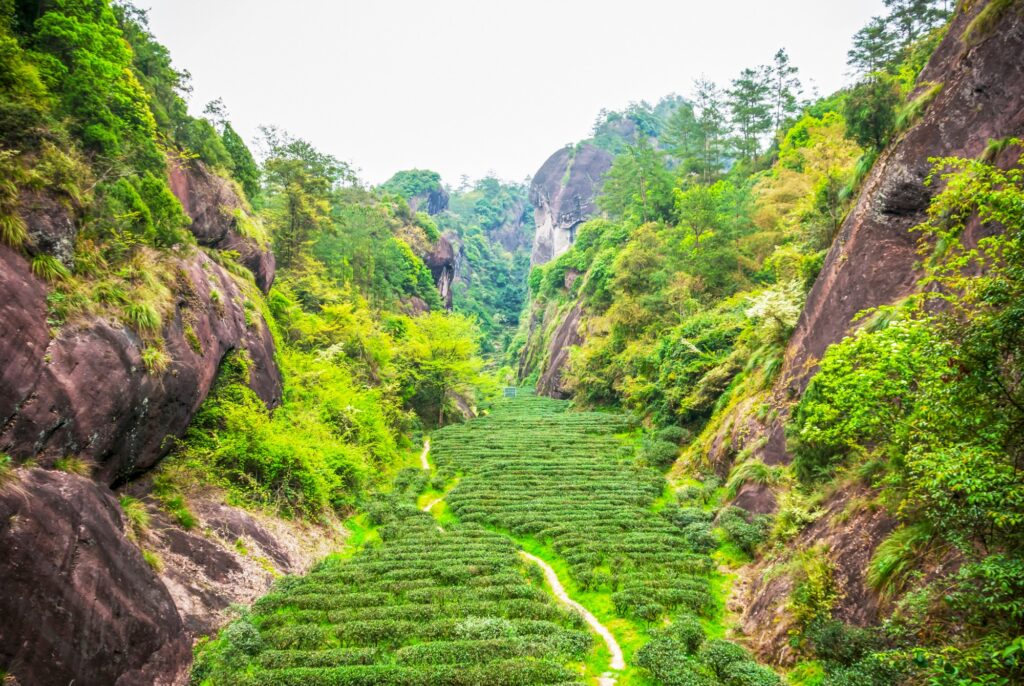
If you’re a fan of bold and smoky flavors, Lapsang Souchong black tea from the Fujian province of China is sure to captivate your taste buds. This unique tea is renowned for its distinct smoky aroma and robust taste, achieved through a traditional smoking process.
Lapsang Souchong tea leaves are withered, rolled, and oxidized like other black teas. However, what sets it apart is the final step of smoking the leaves over pinewood fires. This process infuses the tea leaves with a rich smoky flavor that lingers long after each sip.
The smoky aroma of Lapsang Souchong is often described as reminiscent of a campfire or a cozy log cabin. The flavor profile is bold and robust, with underlying notes of pine and resin. The tea is particularly popular for creating unique culinary experiences, such as smoked tea-infused dishes and cocktails.
While Lapsang Souchong may not be to everyone’s taste, its distinctive flavors and rich history make it a must-try for adventurous tea lovers seeking something out of the ordinary.
The diverse world of black tea
As we conclude our journey through the rich and aromatic black tea regions, it’s clear that each region offers a unique and diverse flavor profile. From the delicate and floral notes of Darjeeling to the bold and robust character of Assam, black teas from around the world provide a myriad of flavors to suit every palate.
The cultivation and processing techniques employed in these regions, coupled with the influence of climate and terroir, contribute to the distinct characteristics of each black tea. Whether you prefer the fragrant and floral Keemun or the smoky intensity of Lapsang Souchong, there’s a black tea out there to satisfy every tea lover’s cravings.
So, the next time you brew a cup of black tea, take a moment to savor the flavors and appreciate the centuries-old traditions that have shaped these incredible teas. The world of black tea is vast and inviting, waiting to be explored one sip at a time.





